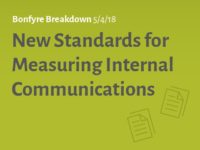In today’s competitive landscape, maintaining high levels of employee engagement is more crucial than ever. Engaged employees are the backbone of a thriving company culture and a key component in retaining top talent. Yet, enhancing employee engagement remains an ongoing challenge for many organizations, necessitating a continuous quest for improvement. Enter Learning & Development (L&D), a powerful strategy that not only equips employees with necessary skills but also significantly boosts their engagement levels. When employees are given opportunities to grow and develop, they build confidence in their abilities, becoming more willing to embrace new responsibilities, explore fresh concepts, and take calculated risks. Improve your employee survey action plan by making L&D a priority for your workforce.
The Importance of Good Employee Engagement Survey Action Plans
Employee engagement is the emotional commitment an employee has toward their organization and its goals. It’s a fundamental concept in HR and management, signifying more than just job satisfaction or loyalty.
Engaged employees are motivated, contribute actively to the company’s success, and are less likely to leave. Conversely, disengagement can lead to increased turnover, higher absenteeism, and a decline in performance, all of which negatively affect the bottom line.
Employee engagement scores serve as a critical barometer for a company and should drive organizational and team-level actions to address common areas of employee feedback or concern.
Translating survey feedback into action is easier said than done, especially in an era of rapid technological change and shifting workforce demographics.
The Role of Learning & Development in a Company Action Plan for Engagement Survey Scores
Career growth and personal and professional development are a critical aspect of employee engagement and a common opportunity for improvement for many organizations. Making L&D opportunities readily accessible for employees address employees’ desires for growth and advancement and also signal a company’s investment in their future.
The Emotional Response to Learning and Development
L&D significantly influences employee engagement by addressing core psychological needs, such as competence, autonomy, and relatedness. When these needs are fulfilled, it enhances an employee’s connection to their work and organization, leading to higher levels of engagement.
For example, when employees feel they have control over their work (autonomy), are connected to their colleagues and the organization (relatedness), and are confident in their skills (competence), they’re more likely to be fully engaged.
Effective L&D programs play a crucial role here, offering opportunities for employees to grow their skills, feel more connected to their workplace, and see a clear path for their career advancement.
The Role of Leadership in Fostering Learning & Development
Leadership plays a crucial role in fostering a work culture that encourages L&D opportunities for employees. Leaders can champion and model L&D by actively participating in learning programs themselves, demonstrating a commitment to personal and professional growth.
This sets a powerful example for all employees, reinforcing the message that continuous learning is valued and expected across the organization. Furthermore, leaders can spotlight success stories within the team, showcasing how L&D initiatives have directly contributed to career advancement and project successes, thus motivating others to engage in learning activities.
Leaders should advocate for budget allocations towards L&D resources, technology platforms that facilitate online learning, and time allowances for employees to engage in learning activities. By doing so, they create a robust framework that supports ongoing development and underscores the importance of L&D in achieving organizational excellence.
Time Management and Learning Opportunities in the Workplace
In a survey of of 2,961 employees, about 47% feel there isn’t enough time during the workday to complete additional L&D training. Integrating L&D into the workplace culture requires a shift in mindset, where continuous learning becomes a core value of the organization. This can be achieved by providing time and resources for employees to engage in learning activities.
Work with management to find opportunities for employees to use company time to work on their development. Encouraging leadership to actively participate in and advocate for L&D programs also plays a crucial role in embedding these practices into the company’s fabric.
However, challenges such as budget constraints, time limitations, and resistance to change can hinder the implementation of effective L&D strategies. Overcoming these often involves demonstrating the tangible benefits of L&D to employees and employers alike.
Also, leverage technology to deliver flexible learning solutions, automate interactions, and receive recommended L&D initiatives for specific employees. Using AI and technology to your advantage is key for managing time, keeping employees on track with L&D goals, and improving employee engagement survey scores.
Rewards for Learning and Development
Implementing effective L&D strategies begins with a thorough understanding of your team’s needs and the specific skills gaps that exist within your organization. It’s essential to conduct regular assessments of your employees’ capabilities and aspirations, aligning L&D opportunities with both individual career paths and the company’s strategic goals. This tailored approach ensures that L&D initiatives remain targeted interventions that foster personal and professional growth.
Make it a more engaging experience for employees by offering rewards for completing certain learning tasks.
Bonfyre has over 1,000 digital gift card reward options, which allows employees to personalize their experience. You can give rewards to employees you’ve noticed going above and beyond, to talent that AI recommends based on KPIs, or by attaching a reward to learning tasks that employees can voluntarily complete at their own pace.
The Role of AI in Leadership Development and Employee Engagement
In companies big and small, leveraging AI can significantly enhance the effectiveness of L&D programs. AI can help leaders identify skills gaps within their teams, tailor learning content to meet individual needs and track progress in real time.
This personalized approach ensures that L&D initiatives are more targeted and impactful, leading to higher engagement and better outcomes. Moreover, AI-driven analytics can provide insights into the ROI of L&D efforts, enabling leaders to make data-informed decisions about future learning investments.
By embracing AI and other technological advancements, leaders can further cultivate a culture of learning and development, ensuring their organizations remain competitive in an ever-evolving marketplace.
How to Measure the Impact of Learning & Development on Employee Engagement Scores
Measuring the impact of L&D on employee engagement scores requires a strategic blend of tools and metrics designed to capture the essence of effective learning and its influence on workforce dynamics. Key Performance Indicators (KPIs) such as course completion rates, post-training assessments, and application of learned skills in the workplace serve as direct metrics of L&D effectiveness.
Additionally, employee surveys and feedback offer insights into the perceived value of training programs and their relevance to employees’ roles and career aspirations. By analyzing these data points, organizations can gauge the immediate and long-term effects of their L&D initiatives on employee engagement.
Adjusting and improving L&D strategies based on feedback and outcomes is essential for maintaining a dynamic and responsive learning environment. Utilizing AI-powered coaching tools like Bonfyre enables organizations to harness advanced analytics and personalized recommendations to turning programs such as New Manager Training into recommended pre-built actions they can take post-training to practice what they have learned.
Moreover, this data allows for a more nuanced understanding of how L&D efforts align with individual and organizational goals. By continuously refining L&D content and delivery methods based on real-time data, companies can ensure their training programs remain relevant, engaging, and impactful.
Learning and Development Cultivates Your Future Talent Pool
The long-term benefits of a sustained L&D and engagement strategy are profound. Beyond the immediate uplift in employee morale and productivity, a commitment to continuous learning fosters a culture of innovation, adaptability, and resilience.
As employees grow and develop new skills, they become more invested in their work and aligned with the company’s vision, driving higher levels of engagement and performance.
Furthermore, leveraging AI-powered tools like Bonfyre can help you measure and enhance L&D effectiveness. These tools ensure that organizations can swiftly adapt to changing business landscapes and workforce needs.



 5 min
5 min




